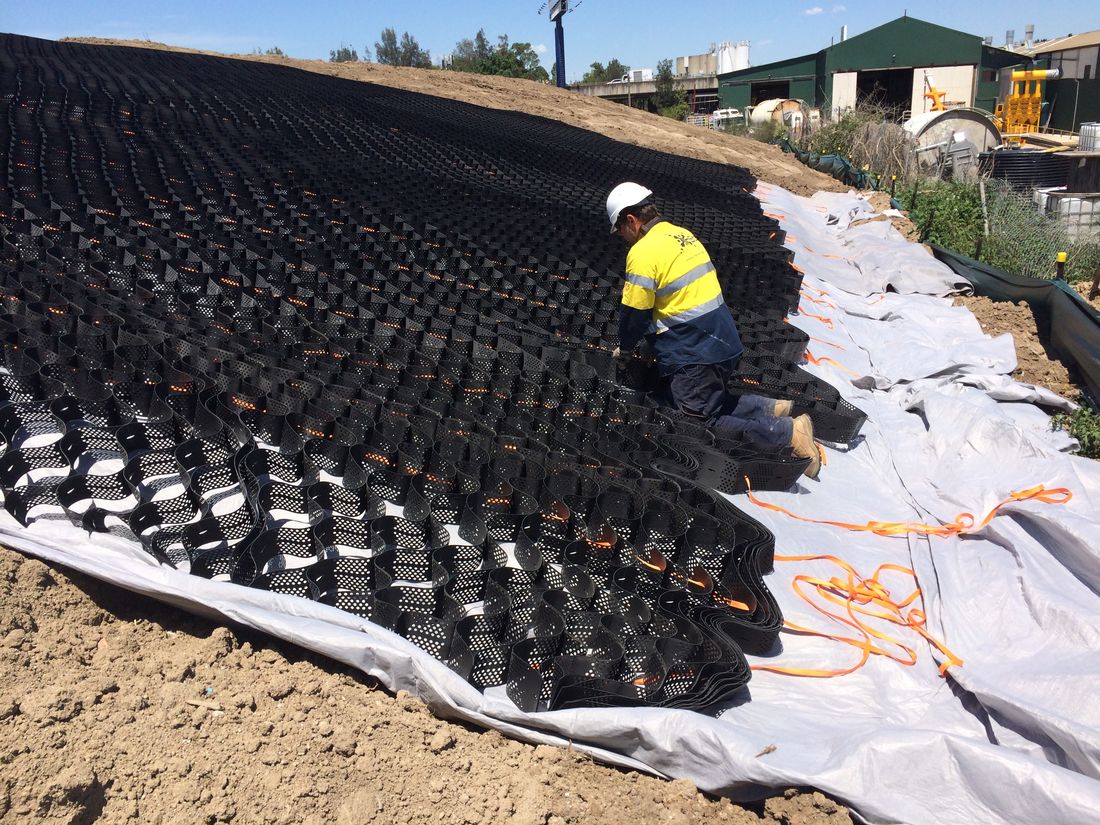

Traditional capping systems are designed to provide containment and separation of unsuitable or contaminated materials. They primarily involve the installation of engineered containment, the quarantining of contaminated materials, and capping, to stop infiltration of rainwater. They also serve as a separation layer which prevents the migration of contaminants into uncontaminated areas on site, onto neighbouring properties, and into waterways.
InSite has effectively engineered and installed capping systems to prevent the leaching of contaminants through the soil profile.
CASE STUDY: Upgrade of former landfill batter capping system
InSite was engaged to upgrade the western batter of a former landfill site. The project scope required the installation of an engineered liner system to contain potential landfill vapour emissions, a Geoweb® was installed to prevent sheet erosion, and revegetation using spray grass was used to stabilise the top soil.
InSite reused certified clean fill from site stockpiles to level the western batter. An HDPE liner was placed across the entirety of the batter and anchored between geofabric layers. The Geoweb® was anchored at the top of the batter, folded out and fixed in place using tendons to the bottom of the slope.
Clean top soil obtained from the site was then placed over the Geoweb® at a thickness of 150mm with 50mm to 75mm above to assist with plant growth. Spray grass was applied across the batter to manage wind and soil erosion. The site was monitored by InSite to ensure successful revegetation.
CASE STUDY: Asbestos and heavy metal capping at historical fuel terminal
As part of a long term remediation project, InSite carried out a second phase of remediation works at a former fuel terminal at a site near Sydney.
Works included excavation of over 1,600m3 of bonded and friable asbestos impacted soil to a depth of 350mm. The contaminated soil was relocated to an onsite stockpile, covered with a fixed geofabric marker layer, prior to being capped with a mixture of VENM and validated quarry soil.
A hotspot containing 81m3 of lead impacted soil was also managed by InSite. This included the ex situ addition of treatment reagents to immobilise the lead compounds and inhibit leaching into surrounding soil and groundwater. Once treated, the soil was returned to the excavation, a geofabric marker layer applied, and capped with VENM.
A water cart equipped with water cannons and jets was used throughout the works program to ensure adequate dust suppression.